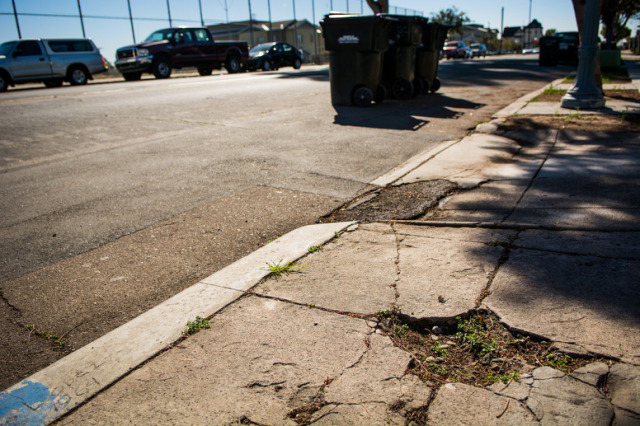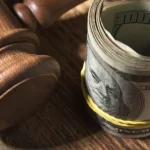
Unmaintained city infrastructure in NYC
The liability is pretty straightforward if you trip in front of a commercial or residential property. The owner of the property is responsible for maintaining the sidewalk. But what are the legal implications if the NYC or Department of Transportation maintains the sidewalk? The laws are very complex and narrow.
Abstract: The sidewalks of New York City (NYC) are a critical infrastructure that facilitates pedestrian movement and contributes to the city’s aesthetic appeal. However, the maintenance and safety of sidewalks are the responsibility of the property owner or the City of New York. Sidewalk negligence can result in severe injuries, property damage, and even fatalities. Therefore, NYC has established several legal obligations and claim processes to ensure sidewalk safety and hold responsible parties accountable. This article aims to explore the legal obligations of NYC sidewalk negligence laws and the claim process, including the Early Settlement Unit.
Introduction: New York City is famous for its sidewalks, which are used by millions of people every day. However, sidewalks can also be hazardous, especially when they are poorly maintained or defective. Injuries caused by defective sidewalks can be severe, ranging from broken bones to traumatic brain injuries. To protect the public from such hazards, New York City has enacted laws that impose legal obligations on property owners to maintain their sidewalks in a safe condition. This research paper provides an overview of New York City’s sidewalk negligence law and the claims process for injured parties.
Legal Obligations of Property Owners: New York City’s sidewalk negligence law imposes a duty on property owners to maintain their sidewalks in a reasonably safe condition. Under New York City Administrative Code §7-210, property owners are required to keep sidewalks abutting their property free from defects, hazards, and other dangerous conditions. This duty extends to both residential and commercial property owners. Failure to maintain the sidewalk in a reasonably safe condition can result in liability for any injuries that result from the defect or hazard.
Legal Obligations of NYC:
The New York City Administrative Code (Section 7-210) stipulates that property owners must maintain and repair the sidewalks adjoining their properties. The code also mandates property owners to keep the sidewalks free from defects and hazards such as cracks, holes, uneven surfaces, and slippery substances. Additionally, property owners must clear the sidewalks of snow, ice, and other debris within a specific time frame after a snowfall or ice storm.
In the case of city-owned sidewalks, the City of New York is responsible for maintenance and repair. However, property owners adjoining the city-owned sidewalks must still ensure the sidewalks are clear of hazards and defects.
Establishing whether NYC is Liable for a Sidewalk Defect:
As per New York City Administrative Code § 7-201(c)(2): The responsibility for maintaining curbs, pedestrian ramps, crosswalks, and other road defects lies with the City of New York. To pursue legal action and seek compensation, the injured party must demonstrate that the City had prior written notice to the Department of Transportation at least 14 days before the accident, regarding the specific condition that caused the injury.
Establishing a Claim for Sidewalk Negligence with NYC
To establish a claim for sidewalk negligence, the claimant must prove that the responsible party breached their duty of care to maintain a safe sidewalk. The claimant must also demonstrate that the sidewalk’s condition was the proximate cause of their injuries or damages.
The claimant can file a claim with the NYC Comptroller’s Office within 90 days of the incident. The claim must include the claimant’s contact information, a description of the incident and injuries or damages sustained, and the location and condition of the sidewalk at the time of the incident. The claimant should also attach any supporting evidence such as medical bills, police reports, and witness statements.
Once the NYC Comptroller’s Office receives the claim, they will investigate the incident, including inspecting the sidewalk’s condition. If the investigation establishes that the responsible party breached their duty of care, the Comptroller’s Office may negotiate a settlement with the claimant.
Early Settlement Unit:
The Early Settlement Unit (ESU) is a division of the NYC Law Department that handles sidewalk injury claims filed with the NYC Comptroller’s Office. The ESU aims to resolve claims promptly and fairly, avoiding lengthy litigation processes.
When a claim is filed with the NYC Comptroller’s Office, the Comptroller’s Office forwards it to the ESU for evaluation. If the ESU determines that the claim has merit, they will attempt to negotiate a settlement with the claimant before the case goes to court. The ESU’s settlement offers may include compensation for medical bills, lost wages, and pain and suffering.
Property Owner Claims Process: If an individual is injured due to a defective sidewalk, they can pursue a claim against the property owner for compensation. To pursue a claim, the injured party must provide notice of the claim to the responsible party within 90 days of the incident, as required by New York City Administrative Code §7-201. The notice should include the details of the incident, including the location, date, and time of the incident, and the nature and extent of the injuries suffered.
If the responsible party fails to respond or denies the claim, the injured party can file a lawsuit in court. Injured parties have three years from the date of the incident to file a lawsuit, as provided by New York Civil Practice Law and Rules §214.
n most cases, to preserve clients’ rights, a claim for both NYC and the Property owner is established until all investigations and if necessary litigation is complete to establish liability.
Legal Citations:
New York City Administrative Code §7-210: https://codelibrary.amlegal.com/codes/newyorkcity/latest/nyc-administrative-code-new?nodeId=NYCAdminCodeNew_SEC_7-210
New York Civil Practice Law and Rules §214: https://www.nysenate.gov/legislation/laws/CVP/214
Case Law: New York courts have interpreted New York City’s sidewalk negligence law over the years, and several key cases have helped to define the legal obligations of property owners and the rights of injured parties.
In Bouboulis v. City of New York (2017), the court held that a property owner was not liable for injuries sustained by a pedestrian who tripped and fell on a defective sidewalk in front of the property. The court found that the property owner had not caused the defect, nor had they been aware of its existence. The court also held that the property owner did not have a duty to inspect the sidewalk for defects that were not readily apparent.
In Horowitz v. City of New York (2019), the court held that the City of New York was not liable for injuries sustained by a pedestrian who tripped and fell on a defective sidewalk. The court found that the city had no actual or constructive notice of the defect, and therefore could not be held liable for the plaintiff’s injuries. The court also noted that the plaintiff had failed to provide sufficient evidence to support their claim of negligence on the part of the city.
In Weiss v. City of New York (2020), the court held that the city could be held liable for injuries sustained by a pedestrian who fell on a defective sidewalk. The court found that the city had prior notice of the defect and failed to take appropriate action to repair it. The court also noted that the defect was a tripping hazard that was not open and obvious, and therefore the city had a duty to repair it.
These cases demonstrate the importance of providing sufficient evidence to support a claim of negligence, as well as the need for property owners and the city to take reasonable steps to maintain their sidewalks in a safe condition.
Challenges Faced by Injured Parties: Despite the legal obligations of property owners and the city to maintain their sidewalks, injured parties often face challenges in pursuing claims for compensation. In many cases, property owners or the city may dispute liability, arguing that the injured party was at fault for the incident or that they did not have notice of the defect.
Additionally, injured parties may struggle to obtain compensation for their injuries, as the claims process can be complex and time-consuming. Insurance companies may also attempt to minimize the amount of compensation paid to injured parties, which can further complicate the process.
Potential Remedies: Injured parties who are successful in pursuing claims for sidewalk injuries may be entitled to compensation for a range of damages, including medical expenses, lost wages, pain and suffering, and other related costs. In some cases, injured parties may also be entitled to punitive damages if the property owner or the city acted with gross negligence or intentional misconduct.
Conclusion: New York City’s sidewalk negligence law imposes a duty on property owners and the city to maintain their sidewalks in a safe condition. Injured parties who are harmed by defective sidewalks have the right to pursue claims for compensation but may face challenges in doing so. Understanding the legal obligations of property owners and the claims process can help injured parties to navigate the legal system and obtain the compensation they deserve.







